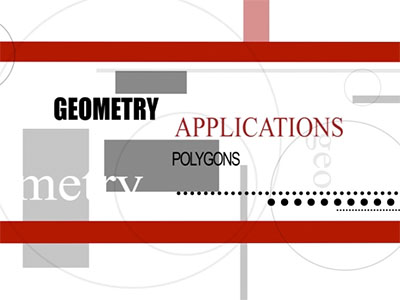
Display Title
VIDEO: Geometry Applications: Polygons
Display Title
VIDEO: Geometry Applications: Polygons
Topic
Polygons
Description
The video "Geometry Applications: Polygons" delves into the significance and versatility of polygons in real-world applications. It begins by introducing polygons through the design of the Pentagon, showcasing how its five-sided structure enhances perimeter and accessibility while addressing practical design challenges. Key concepts like perimeter, angles, and versatility in design are emphasized. The discussion then transitions to the use of regular polygons in Islamic art, demonstrating how artisans employed compasses and straightedges to create intricate geometric patterns, with applications in tiling and architecture. Finally, the video explores composite figures in architecture, using the Petronas Towers as an example of combining polygons like overlapping squares, triangles, and hexagons to create complex and symmetrical designs. Calculations of areas and patterns highlight architectural efficiency and aesthetic appeal.
Relevance to Topic: This video explains and highlights various applications of polygons in real-life scenarios and mathematical contexts, providing valuable insights for understanding geometric concepts.
Teacher's Script: Let us explore a video that shows real-world examples of polygons in architecture, art, and design. Pay close attention to how shapes like triangles and hexagons are used strategically to create beautiful and practical designs. This will help you understand why geometry is not just theoretical but also practical and artistic.
For a complete collection of videos related to Polygons click on this link: Geometry Applications: Polygons Collection.
| Common Core Standards | CCSS.MATH.CONTENT.HSG.MG.A.1, CCSS.MATH.CONTENT.HSG.MG.A.2, CCSS.MATH.CONTENT.HSG.MG.A.3 |
|---|---|
| Duration | 32.62 minutes |
| Grade Range | 8 - 10 |
| Curriculum Nodes |
Geometry • Polygons • Applications of Polygons |
| Copyright Year | 2010 |
| Keywords | geometry, polygons, applications of polygons |